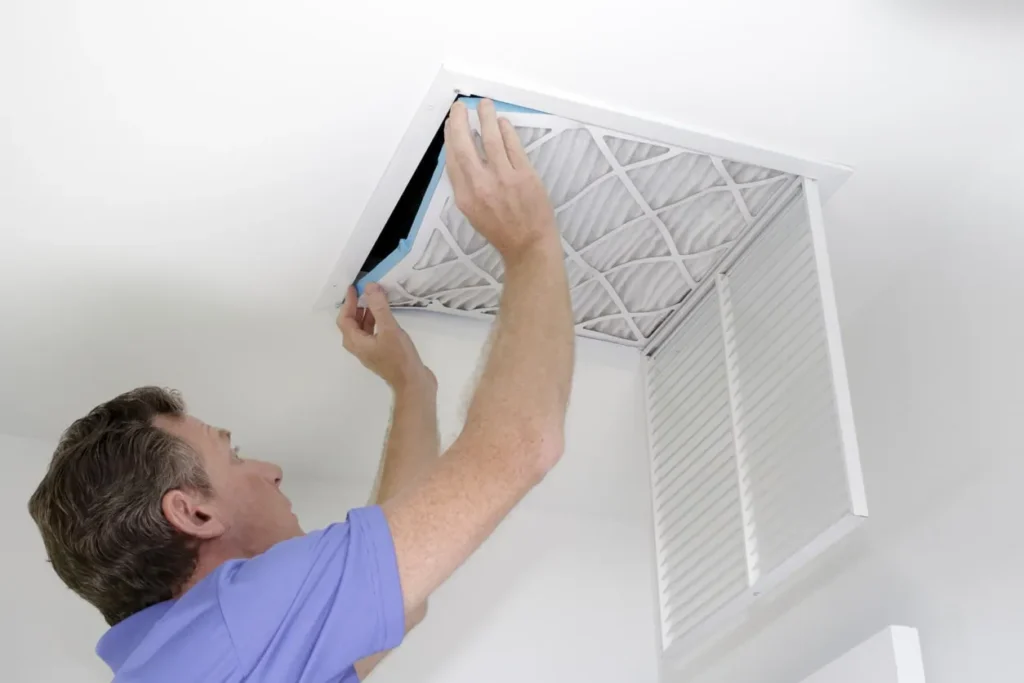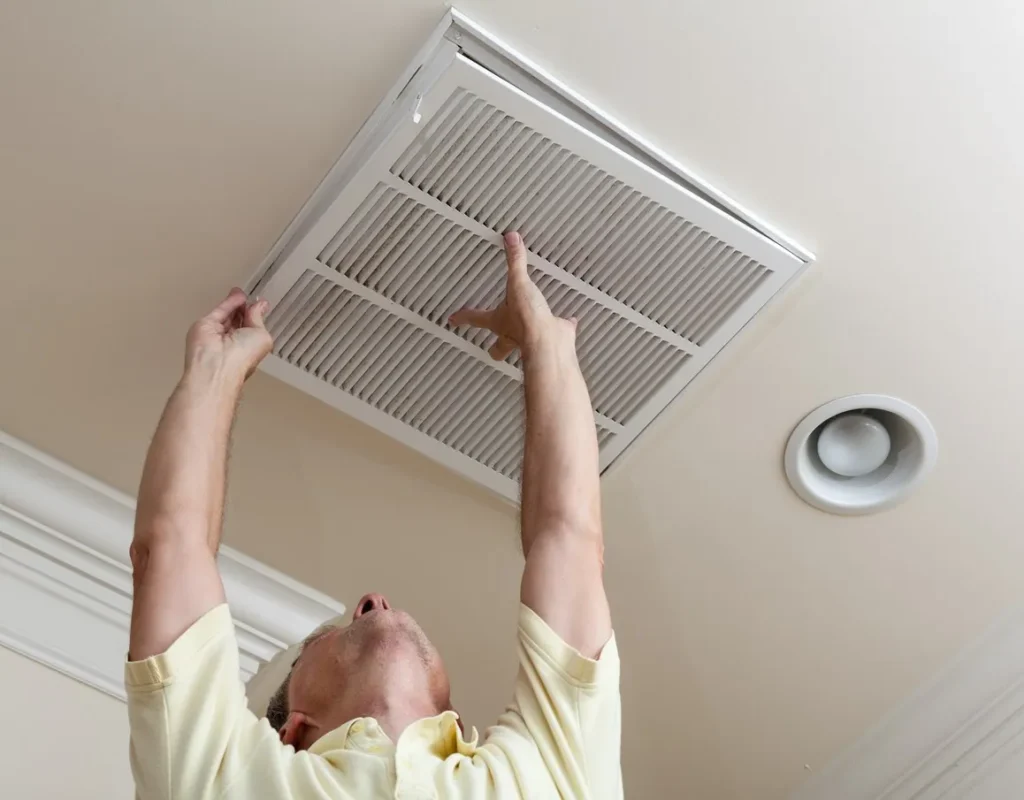Welcome to your go-to resource for everything you need to know about changing air filters! Whether you’re a seasoned homeowner or a newbie in the world of HVAC maintenance, this guide will walk you through the essential steps of replacing your air filters with ease and confidence.
From understanding the importance of regular filter changes to mastering the art of installation, we’ve got you covered. Say goodbye to dusty vents and hello to fresher, cleaner air in your home. Let’s dive in and transform your indoor air quality together!
Table of Contents
ToggleHow Often Should You Changing Air Filters?
Keeping your indoor air quality at its best and ensuring your HVAC system runs efficiently relies on one critical task: regularly you changing air filters. How often you need to do this depends on a few factors, like the type of filter you use and the level of indoor air pollution. Typically, it’s suggested to swap out your filters every 30-90 days.
However, if you have pets or allergies, you should do it more frequently, like every 20-45 days. The same goes for areas with high levels of air pollution or dust. By sticking to this routine, your HVAC system can effectively capture dust, pollen, and pet dander, ultimately improving your home’s air quality and keeping potential health issues at bay.
How Do You Install a New Air Filter?

Installing a new air filter is a relatively simple process that can be completed in just a few steps. Start by locating the air filter slot in your HVAC system, which is typically located near the return air duct or air handler cabinet.
Once you’ve located the air filter slot, carefully remove the cover or panel to access the filter compartment. Please take note of the size and orientation of the old filter before removing it.
Next, please insert the new filter into the slot, ensuring that it is placed with the arrows indicating the direction of airflow pointing towards the HVAC unit. This ensures that the filter functions appropriately and effectively captures airborne particles.
Finally, securely close the filter compartment, ensuring that there are no gaps or leaks around the edges. This helps to maintain proper airflow through the system and prevents unfiltered air from bypassing the filter.
Regularly replacing your air filter helps to maintain proper airflow, prevents the buildup of dust and debris within your HVAC system, and extends the lifespan of your equipment.
What If You Have a Window Air Conditioner?
If you have a window air conditioner, the process of changing the air filter is similar to that of a central HVAC system. Begin by locating the air filter slot, which is typically located near the front of the unit.
Depending on the model of your window AC unit, you may need to remove a front panel or grille to access the filter. Once you’ve accessed the filter, remove the old filter and dispose of it properly.
Next, insert the new filter into the slot, making sure to follow the manufacturer’s instructions for proper installation. Ensure that the airflow arrows on the filter are pointing toward the unit, as this ensures proper filtration.
Finally, securely replace the front panel or grille, ensuring that it is adequately sealed to prevent air leaks. Regularly changing air filter in your window AC unit helps to maintain optimal performance and energy efficiency, ensuring calm and comfortable air throughout your home.
Air Filter Maintenance Tips
In addition to regularly changing your air filters, there are several maintenance tips you can follow to keep your HVAC system running smoothly and efficiently.
- Keep the area around your HVAC unit clean: Ensure that the space around your HVAC unit is free from debris and obstructions. This allows for proper airflow and prevents potential damage to the unit.
- Schedule regular maintenance checks: Arrange for a professional HVAC technician to inspect and clean your system’s components on a regular basis. This includes cleaning the evaporator and condenser coils, checking refrigerant levels, and lubricating moving parts.
- Use a programmable thermostat: Invest in a programmable thermostat to optimize energy usage and reduce wear and tear on your HVAC system. Program the thermostat to adjust the temperature based on your schedule, ensuring that your system runs only when needed.
- Address issues promptly: Be proactive in addressing any problems or concerns with your HVAC system. If you notice any unusual noises, odors, or changes in performance, contact a qualified HVAC technician to diagnose and address the problem promptly.
By following these maintenance tips, you can help to ensure that your HVAC system operates efficiently and effectively, providing you with reliable comfort all year round.
Replace The Air Filter In The Return Air Duct

Changing air filter in the return air duct is an essential part of HVAC maintenance. Here’s how you can do it:
- Turn off your HVAC system: Before replacing the air filter, turn off your HVAC system to prevent any accidents or injuries.
- Locate the return air duct: The return air duct is typically located near the air handler or furnace. Remove the cover from the return air duct to access the filter compartment.
- Remove the old filter: Carefully slide out the old filter from the compartment and dispose of it properly.
- Please insert the new filter: Insert the new filter into the compartment, making sure that it is placed with the airflow arrows pointing towards the HVAC unit.
- Replace the cover: Securely replace the cover on the return air duct, ensuring that it is adequately sealed to prevent air leaks.
Regularly replacing the air filter in the return air duct helps to maintain proper airflow and prevents the buildup of dust and debris within your HVAC system.
Replace The Air Filter In The Air Handler Cabinet
If your HVAC system has an air handler cabinet, you’ll need to replace the air filter in this compartment as well. Here’s how you can do it:
- Turn off the power: Before changing air filter, turn off the power to your HVAC system to prevent any electrical accidents.
- Locate the air handler cabinet: The air handler cabinet is typically located near the indoor unit of your HVAC system. Carefully remove the cover from the cabinet to access the filter compartment.
- Remove the old filter: Take out the old filter from the compartment and dispose of it properly.
- Please insert the new filter: Insert the new filter into the compartment, ensuring that it is placed with the airflow arrows pointing towards the HVAC unit.
- Replace the cover: Securely replace the cover on the air handler cabinet, ensuring that it is adequately sealed to prevent air leaks.
Regularly replacing the air filter in the air handler cabinet helps to maintain proper airflow and prevents the buildup of dust and debris within your HVAC system.
Replace The Air Filter In The Window AC Unit
Maintaining the air filter in your window AC unit is essential for optimal performance and energy efficiency. Here’s how to replace it:
- Locate the air filter slot: Find the air filter slot, typically located near the front of the unit. You may need to remove a front panel or grille to access it.
- Remove the old filter: Carefully remove the old filter from the slot and dispose of it properly.
- Please insert the new filter: Place the new filter into the slot, ensuring that it is positioned with the airflow arrows pointing towards the unit.
- Secure the front panel or grille: Replace the front panel or grille, ensuring a snug fit to prevent air leaks.
Regularly changing air filter in your window AC unit ensures efficient cooling and helps maintain clean indoor air quality.
FAQ More About Changing Air Filter
Here are some frequently asked questions about changing air filter:
How often should you change the air filter?
The frequency of changing air filter depends on factors like the type of filter, indoor air quality, and the presence of pets. Generally, it’s recommended to change them every 30-90 days.
What happens if you don’t change the AC filter?
Neglecting to change your AC filter can lead to reduced airflow, decreased efficiency, higher energy bills, and potential damage to your HVAC system. Dirty filters can also worsen indoor air quality, exacerbating allergies and respiratory issues.
Can you change the air filter yourself?
Yes, you can change the air filter yourself in most cases. It’s a simple task that doesn’t require advanced skills. Just make sure to follow the manufacturer’s instructions and safety precautions.
What happens when the air filter needs to be changed?
When the air filter needs to be changed, several issues may arise. Reduced airflow from vents, increased dust and allergens in your home, higher energy bills, and potential damage to your HVAC system are common signs. Promptly replacing the filter helps prevent these problems.
How often should I be changing my air filter in my furnace unit?
It’s recommended to change your furnace air filter every 1 to 3 months, depending on factors like filter type, indoor air quality, and usage patterns. Regular changes help maintain optimal airflow and efficiency.
Can using higher MERV-rated filters be helpful in improving air quality in my NAPA furnace unit?
While higher MERV-rated filters can potentially improve air quality by capturing smaller particles, it’s essential to ensure they’re compatible with your furnace unit. Consult your manufacturer’s guidelines to prevent airflow restrictions and system damage.
How do I access and replace the air filter in my NAPA furnace unit with return air covers?
To access the air filter in your NAPA furnace unit with return air covers, locate the cover panel on the return air duct. Remove the screws or clips securing the cover, then carefully slide out the old filter and replace it with a new one of the correct size and rating.
What size of air filter should I shop for to fit my NAPA furnace unit with return air covers?
Measure the dimensions of the filter slot in your NAPA furnace unit to determine the correct size. Typically, filters are labeled with dimensions in inches (e.g., 16x20x1), ensuring a snug fit and proper filtration efficiency.
Are there any accessories available to help with changing air filters in my NAPA furnace unit more efficiently?
Yes, there are various accessories available, such as filter changing tools and magnetic filter slot covers, designed to simplify the process of replacing air filters in NAPA furnace units. These accessories can help save time and ensure proper filter installation.
How can you tell if an air filter is terrible?
You can tell if an air filter is terrible by checking for visible dirt and debris, reduced airflow from vents, increased dust and allergens in your home, and higher energy bills. If you notice these signs, it’s time to replace the filter.
For professional HVAC services in Katy, TX, contact 75 Degree AC:
- Phone: (713)-598-2737
- Address: 75 Degree AC Repair, Katy, TX 77493
- Email: 75degreeacservices@gmail.com
We serve the Katy area with top-quality HVAC repair, maintenance, and installation services.
